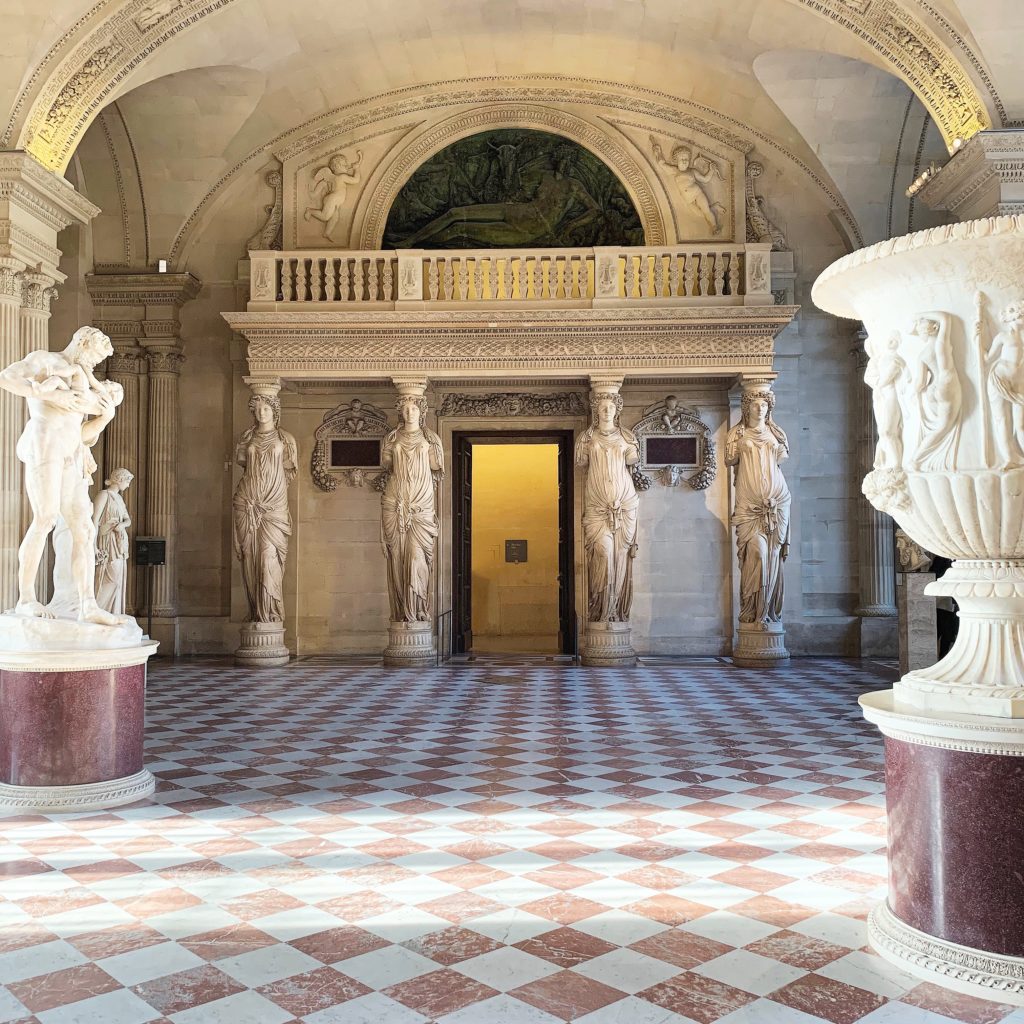A caryatid is a column craved in the draped form of a female (and occasional male). Popular in Ancient Greece, the most famous example from that time is the porch of the Erechtheion on the Athens Acropolis.

Caryatids came to Paris during the French Renaissance, when everything classical became new again. The first Parisian caryatids, sculpted by the legendary Jean Goujon, date back to 1550; they’re the quartet that support the old musicians’ gallery of what is now known as the Salle des Cariatides, in the Louvre Museum.

At the time, this space was a ballroom at the heart of the Louvre, then the royal court of France. All sorts of glamorous festivities took place here, including the celebration of the betrothal of Mary Queen of Scots to the future François II of France.

As the Louvre was expanded and embellished over the years, its façade was graced with numerous caryatids, such as the four pairs of women who help hold up the Pavillon de l’Horloge:

Baron Georges-Eugène Haussmann, who transformed a still largely medieval Paris in the mid nineteenth century, adored neo-Classical architecture, choosing it as his guiding principle for the urban makeover. Caryatids came back into such fashion that most of the city’s human-form columns date from the Haussmannian period. You often find these caryatids in pairs, framing the top of a doorway, and propping up the balcony of the étage noble. Like this seductive duo on Quai de la Mégisserie:

They were carved by sculptor Aimé Millet, who also added these caryatids to the Passage du Bourg l’Abbé:

By the way, Millet was evidently a lover of the female form, because he was also the sculptor of this beauty in the Tuileries:

You see the occasional male caryatid, such as the two chaps who guard the entrance to the Cour du Commerce Saint-André on Boulevard Saint-Germain:

Whether you’re an architect buff, you’re finding new ways to entertain your kids, or you’re just wanting to see a new angle of Paris, it’s fun to play Spot the Caryatids. It’s estimated there are more than 500 of them in Paris, and you never know when you’ll next see one pop unexpectedly into sight — say, framing the second-floor corner windows of the building on the angle on Quai Voltaire and Rue du Bac:

Just another reason to ‘Always look up!’ when in Paris!

